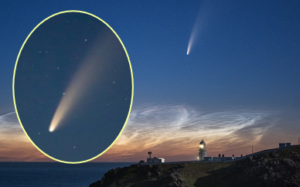Scruton Sky at Night
by Peter Williams
Scruton Sky at Night – May 2021
After spending the winter months of 2020-21 as a ‘Morning Star’, Venus will emerge into the post-sunset western sky as an ‘Evening Star’ from April.
Scruton Sky at Night – March 2021
The skies are gradually getting lighter in the evening with the Spring Equinox on 20 March – equal day and night, and the change to BST on 28 March when the clocks go forward one hour.
Scruton Sky at Night (Mars Special)
The night skies are fairly ‘quiet’ this month with a full Moon on the 27th. There is, however, a close encounter on the evening of the 18th between the crescent Moon and, just above it, the planet Mars.
Scruton Sky at Night – December 2020
At 7 am on 12 December the thin waning crescent Moon will be low in the SE, with Venus to the lower left. This should be a spectacle as the Earth will be illuminating the night hemisphere of the Moon.
Scruton Sky at Night – November 2020
Darker skies mean better viewing in November. From the 5th onward, the constellation Orion is visible, low at first in the ESE sky but rising higher, ending November fairly high in the SE.
Scruton Sky at Night
The planet Mars is very well placed for most of the month, high up in the evening sky to the south around midnight.
Scruton Sky at Night – September 2020
Darkening nights now make for better viewing of the evening skies and it is interesting to note that there are proposals to designate parts of the Yorkshire Dales as a Dark Sky Reserve.
Scruton Sky at Night – August 2020
Comet NEOWISE was visible low in the north sky during July, and with darker skies, will still be visible during the first weeks of August. Look out for it now – it won’t be back for 6,800 years!
Sky at Night – July 2020
The earth is at Aphelion at mid-day on 4 July, which means that it is at the furthest distance it can be from the Sun. On 6 July, the full moon passes just below Jupiter in the SSE sky, and with Saturn to the upper left, this makes an interesting sight.
Sky at Night – June 2020
There is no true night during June in Scruton; the sky is not black but rather a beautiful velvet deep blue, merging to turquoise on the northern horizon. Look out for Noctilucent Clouds in the hour before and after midnight, as they catch the light of the midnight sun.
- « Previous
- 1
- 2
- 3
- 4
- Next »






